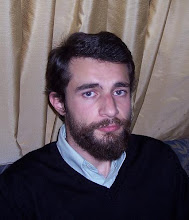Manyfunctional neuroimaging studies of biological motion have used as stimuli point-light displays of walking figures and compared the resulting activations with those evoked by the same display elements moving in arandomor noncoherent manner. Although these studies have established that biological motion activates the superior temporal sulcus (STS), the use of random motion controls has left open the possibility that coordinated and meaningful nonbiological motion might activate these same brain regions and thus call into question their specificity for processing biological motion. Here we used functional magnetic resonance imaging and an anatomical region-ofinterest approach to test a hierarchy of three questions regarding activity within the STS. First, by comparing responses in the STS with animations of human and robot walking figures, we determined (1) that the STS is sensitive to biological motion itself, not merely to the superficial characteristics of the stimulus. Then we determined that the STS responds more strongly to biological motion (as conveyed by the walking robot) than to (2) a nonmeaningful but complex nonbiological motion (a disjointed mechanical figure) and (3) a complex and meaningful nonbiological motion (the movements of a grandfather clock). In subsequent whole-brain voxel-based analyses, we confirmed robust STS activity that was strongly right lateralized. In addition, we observed significant deactivations in the STS that differentiated biological and nonbiological motion. These voxel-based analyses also revealed regions of motion-related positive activity in other brain regions, including MT or V5, fusiform gyri, right premotor cortex, and the intraparietal sulci.
Brain Activity Evoked by the Perception of Human Walking:Controlling for Meaningful Coherent Motion.
Kevin A. Pelphrey, Teresa V. Mitchell, Martin J. McKeown, Jeremy Goldstein, Truett Allison, and Gregory McCarthy.
The Journal of Neuroscience, July 30, 2003 • 23(17):6819–6825 • 6819.
Friday, February 15, 2008
Perceived causality influences brain activity evoked by biological motion
Using functional magnetic resonance imaging (fMRI), we investigated brain activity in an observer who watched the hand and arm motions of an individual when that individual was, or was not, the cause of the motion. Subjects viewed a realistic animated 3D character who sat at a table containing four pistons. On Intended Motion trials, the character raised his hand and arm upwards. On Unintended Motion trials, the piston under one of the character's hands pushed the hand and arm upward with the same motion. Finally, during Non-Biological Motion control trials, a piston pushed a coffee mug upward in the same smooth motion. Hand and arm motions, regardless of intention, evoked significantly more activity than control trials in a bilateral region that extended ventrally from the posterior superior temporal sulcus (pSTS) region and which was more spatially extensive in the right hemisphere. The left pSTS near the temporal-parietal junction, robustly differentiated between the Intended Motion and Unintended Motion conditions. Here, strong activity was observed for Intended Motion trials, while Unintended Motion trials evoked similar activity as the coffee mug trials. Our results demonstrate a strong hemispheric bias in the role of the pSTS in the perception of causality of biological motion.
James P. Morris a; Kevin A. Pelphrey a; Gregory McCarthy bc.
Perceived causality influences brain activity evoked by biological motion.
journal of Social Neuroscience 17 July 2007.
James P. Morris a; Kevin A. Pelphrey a; Gregory McCarthy bc.
Perceived causality influences brain activity evoked by biological motion.
journal of Social Neuroscience 17 July 2007.
Subscribe to:
Comments (Atom)
